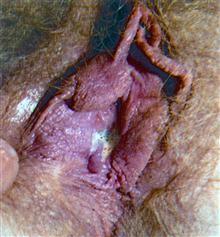Vaginal Discharge
Vaginal discharge can occur at any age but is usually a symptom of reproductive years.
History
Obtain a full history of the discharge, including timing, colour, consistency, smell and the presence or absence of itch. Intensive itch suggests thrush. An offensive smell occurs with trichomonal and bacterial vaginosis. Ask whether the patient experiences pain on intercourse. Pelvic pain, tenderness and fever suggest pelvic inflammatory disease. Take a full sexual history (young women, change of partner, multiple partners). Excessive normal secretions just feel wet. There is no discomfort.
Examination
A red, swollen, sore and itchy vulva suggests candidiasis. The character of the discharge is important. A thick yellow-brown discharge from the cervix occurs with gonorrhoea; a thinner yellow-brown cervical discharge occurs with Chlamydia; a thin greeny-yellow and often frothy discharge with an unpleasant fishy smell occurs with trichomoniasis; a thin grey-white fishy smelling discharge suggests bacterial vaginosis; a thick white odourless discharge occurs with candidiasis. Carry out a PV and speculum examination. This will show an inflamed cervix with trichomonal vaginosis and also with cervicitis due to gonococcus, Chlamydia and herpes.
General Investigations
■ Gram stain
Gram stain on cervical or urethral exudate – Gram-negative intracellular diplococci in gonorrhoea.
■ Vaginal pH testing
pH>4.5 in bacterial vaginosis. pH<4.5 in candidiasis.
■ Triple swabs
High vaginal swab – bacterial vaginosis, candidiasis, trichomonal vaginalis.
Endocervical swab – gonorrhoea.
Endocervical swab – Chlamydia DNA amplification for Chlamydia trachomatis.
■ Urine analysis (first catch)
DNA amplification for Chlamydia.





